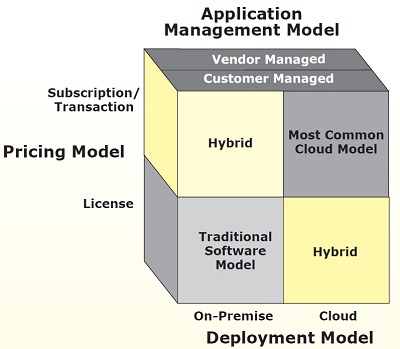Other Voices: The multiple dimensions of Cloud WMS deployment
Although warehouse management systems were late to the cloud party, software pricing and deployment options are driving adoption.

Editor’s note: The following column by Dan Gilmore, chief marketing officer for Softeon, is part of Modern’s Other Voices column, a series featuring ideas, opinions and insights from end-users, analysts, systems integrators and OEMs. Click here to learn about submitting a column for consideration.
————-
For a variety of reasons, warehouse management systems (WMS) were late to the party in terms of Cloud deployment versus other areas of supply chain software.
But that is changing rapidly. We’re seeing about 60% of new WMS implementations being Cloud-based, with that number continuing to head higher, though there are likely to be some “on-premise” deployments for some time. The benefits of Cloud deployments – reduced implementation costs, faster time to value, reduced system management requirements, portability, etc. – have been well documented, and I will not cover them here.
All that said, despite the rapid growth of supply chain technology delivered in in the Cloud generally and for WMS specifically, there are often still a lot of uncertainties among potential adopters. I see it time after time. To sort out the options, the following discussion may help.
There are really three dimensions to consider in WMS implementation:
Deployment Model: Will the software be deployed in the Cloud, or installed inside the four walls of the enterprise (on-premise)?
Pricing Model: Will the software be acquired under a traditional upfront license (and generally then annual support fees), or through some type of subscription/transaction-based pricing?
Management Model: Will the acquiring company manage the application however it is deployed or will the software vendor do this work, under what is generally called “managed services?”
These options are nicely illustrated in the graphic below, which really applies to any type of supply chain software, but seems to really resonate when I talk with potential WMS buyers.
[See image WMS Software Pricing and Deployment Options]
The traditional WMS software model, of course, involves an on-premise deployment with upfront license pricing as indicated in the lower left quadrant. Cloud deployment are generally delivered with subscription pricing, as indicated in the top right quadrant.
But other combinations are possible. For example, many software vendors will support on-premise deployment, but with subscription-based pricing. Other vendors can deliver in the Cloud but sell with upfront license pricing, as shown in the two remaining quadrants.
And for any of the options, a potential WMS user needs to decide if they want to manage the application over time or have the WMS software company handle that, as shown in the top section of the graphic. A vendor managed service approach is especially popular for Cloud deployments.
Potential WMS adopters should understand these decisions and make sure which options WMS vendors support. In some cases, hybrid options are possible. For example, one US 3PL firm has a number of sites deployed in the Cloud, but for perceived bandwidth issues initially had two facilities running on-premise systems.
There is actually yet one more dimension not shown on the chart. That involves whether the WMS in the Cloud will be delivered in true Software as a Service (SaaS) model, in which all customers run off the same server farm and have identical software available, versus WMS delivered in a so-called “private Cloud” deployment, which generally would handle any number of a company’s distribution centers but no one else’s. Today, most companies clearly favor private Cloud WMS deployments.
By understanding all the options – and identifying very clearly internally what is really desired in a WMS deployment – better decisions can be made.

Article Topics
Blogs News & Resources
Learn from lift truck service history Two voices of reason on pallet materials 60 Seconds with Bob Trebilcock, outgoing executive editor, Modern Materials Handling The reBound Podcast: How Pitney-Bowes is innovating with autonomous vehicles. Packaging Corner: Be open to change 60 Seconds with Robert Martichenko of American Logistics Aid Network The reBound Podcast: Looking for talent in all the right places: How Essendant is revolutionizing recruitment More BlogsLatest in Materials Handling
Geek+ and System Teknik deploy PopPick solution for pharmacy group Med24.dk Beckhoff USA opens new office in Austin, Texas Manhattan Associates selects TeamViewer as partner for warehouse vision picking ASME Foundation wins grant for technical workforce development The (Not So) Secret Weapons: How Key Cabinets and Asset Management Lockers Are Changing Supply Chain Operations MODEX C-Suite Interview with Harold Vanasse: The perfect blend of automation and sustainability Consultant and industry leader John M. Hill passes on at age 86 More Materials HandlingSubscribe to Materials Handling Magazine

Find out what the world's most innovative companies are doing to improve productivity in their plants and distribution centers.
Start your FREE subscription today.
April 2024 Modern Materials Handling

Latest Resources










